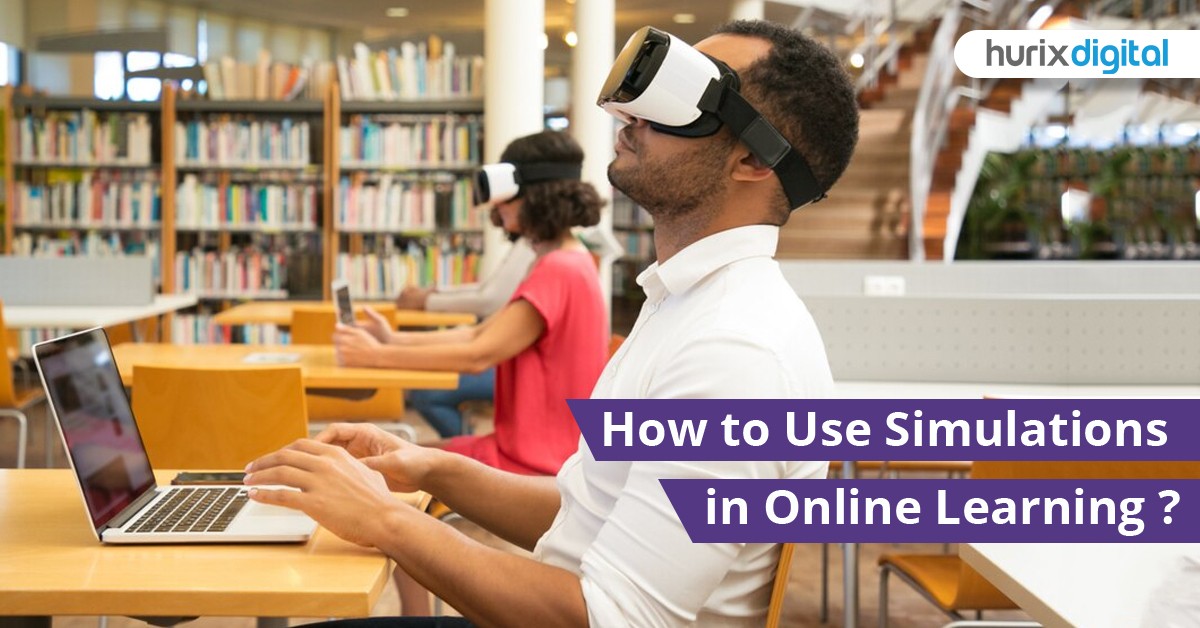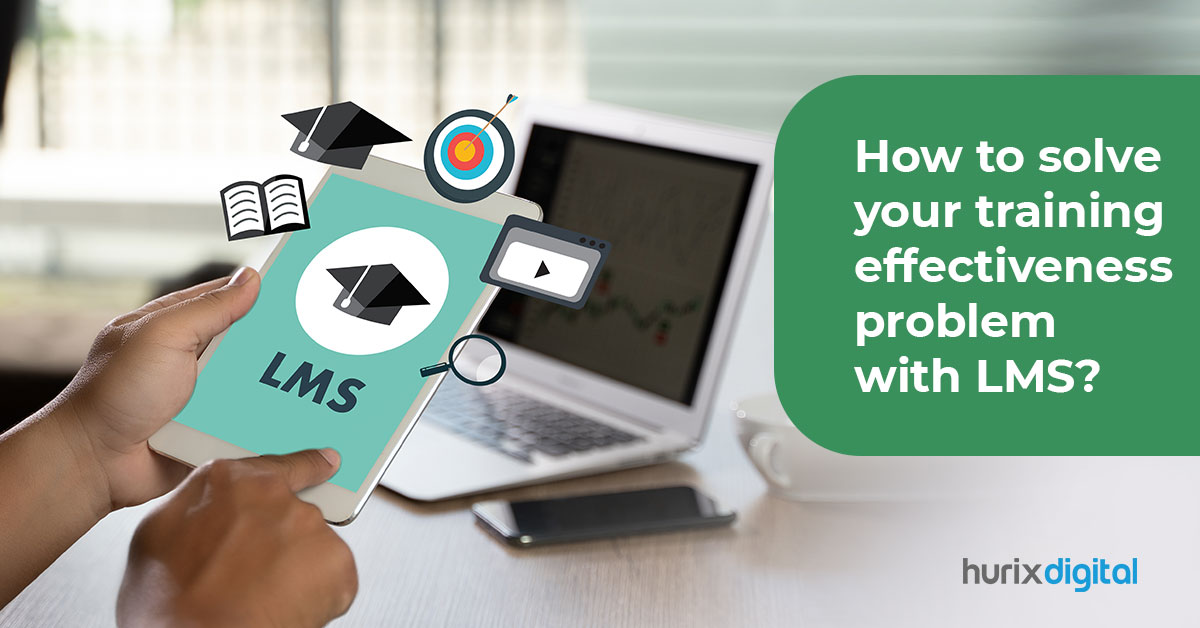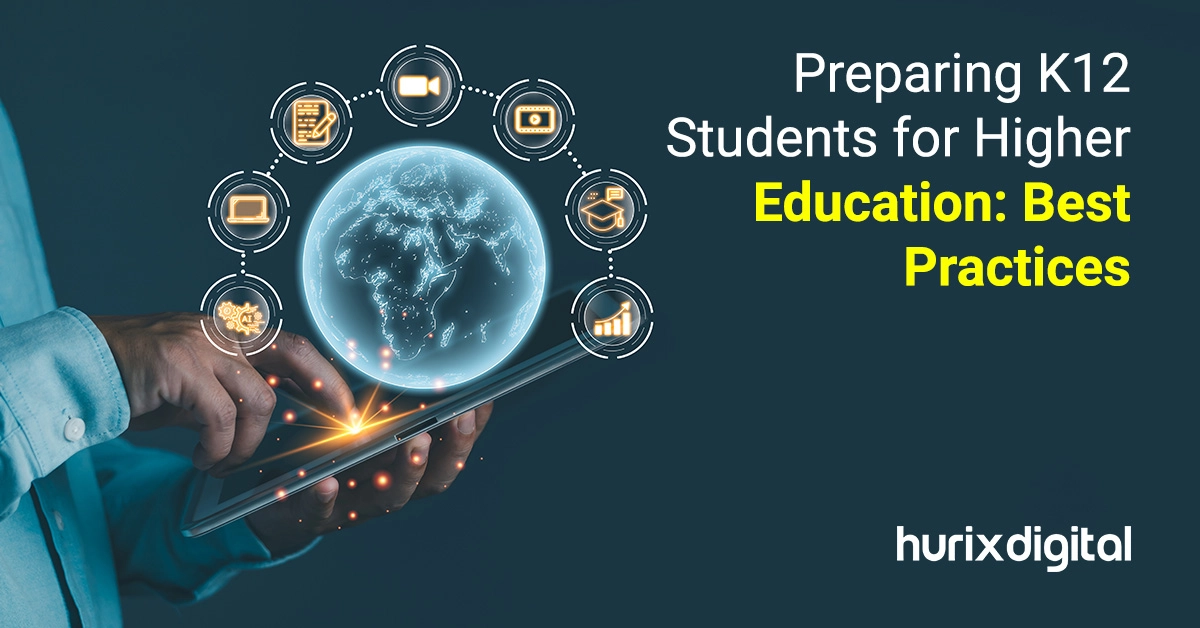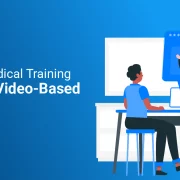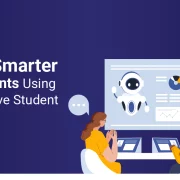
Blended Learning Environment for Higher Ed Students – How To Create?
Higher education has been going through a transformation for many years. Traditional teaching methods are being replaced by unique and innovative concepts that improve learning outcomes.
Most interestingly, colleges and universities are slowly leveraging technology to deliver a great student experience. As a result, digital ways of teaching are becoming common across the world.
Since COVID-19, the adoption of technology by institutions has increased by many folds. No wonder 54% of higher education organizations boosted their investment in online learning. The situation is giving rise to a new concept that offices have adopted recently. Known as blended learning, the model combines traditional and digital techniques to teach students.
In this whitepaper, we will ponder how universities and colleges may create a blended learning environment for their students. But before that, let us take a look at what blended learning entails.
Table of Contents
- What is Blended Learning?
- The New Meaning of Blended Learning
- How to Create an Awesome
- Steps to Create the Best Blended Learning Environment for Colleges and Universities
- Final Thoughts
What is Blended Learning?
Blended learning was taking shape even before the pandemic. It referred to the combination of face-to-face interactions in the classroom coupled with computer-based activities.
Additionally, the learning approach blends synchronous and asynchronous learning tools to improve learning processes. Therefore, blended learning combines both traditional and digital instructional methods.
The New Meaning of Blended Learning
Earlier, blended learning required the presence of the teacher and the student in the same physical space. The teacher would still retain control and provide directions to students and act as a guide.
However, the pandemic changed everything. Months of lockdown forced students to stay inside their homes away from classrooms.
As a result, educational institutes had to think fast to sustain learning. Just like professionals, colleges and universities shifted to remote learning where teachers and students were separated by distance.
Additionally, online classes and activities took over classroom interactions. Students and teachers both had to adapt to technology and learn to use different apps. Naturally, this increases the scope of blended learning. It now combines not only traditional and digital methods but also a whole new online experience. Most importantly, students and teachers don’t need to be present in the same space. We now have the technology to facilitate learning right from the home.
How to Create an Awesome
The coronavirus made 9 out of 10 higher education institutions in the US plan for a blended mode of instruction. They are ready for a change and a culture of transformation has gained a stronghold in the higher education industry.
However, how do you create the best-blended experience for your students?
Gather Your Requirements
Educators will need a range of technological resources to create a hybrid learning environment. Let’s go over the basic hardware and digital solutions institutions will need to deliver blended learning.
1. Devices
Students will need a device to access online learning. It can be a desktop, laptop, smartphone, or tablet. It is on the institution to decide what their students will use to attend classes or do assignments.
Additionally, every student should have the same device to ensure there is no disparity. Moreover, colleges and universities will have to set the standard for the devices. For example, you may want your students to use a laptop with the latest Windows or Mac operating system.
Educators can also experiment with bringing their own device (BYOD) trend. Here, students carry their own devices to learn, which can also be their personal phones or computer.
2. Apps and Tools
Blended learning depends on several apps and tools. Most of them are interactive tools like virtual whiteboards, video conferencing apps, cloud storage solutions, and so on. Therefore, institutes will have to decide what they are going to use for their learning processes.
The task of choosing the right tools and tech services may be challenging if you lack the expertise. So, here is what 70% of educational organizations use to give you a better idea:
- Downloading of learning materials
- Live video classrooms
- Streaming of lectures and their recordings
- Online whiteboards
- Messaging tools
- Image and document processing tools
3. Software and Learning Platforms
A hybrid learning approach requires reliable learning platforms to manage students and processes. You may choose from solutions available in the market and customize them to your requirements. Alternatively, you may develop custom software to meet your unique needs.
The list of solutions generally includes a learning management system (LMS). It acts as the administrative control centre to manage all nuances of your courses. Teachers can post assignments, perform assessments, and track the progress of the students.
Moreover, institutions may rely on a content delivery platform to provide access to learning materials.
4. Infrastructure
Colleges will need a solid infrastructure to deliver blended learning. Your infrastructure will include all hardware, networks, and storage systems to facilitate hybrid teaching. However, investing in on-premise infrastructure can turn out to be expensive. In addition, you may need a dedicated IT team to manage and maintain your systems.
A cost-effective way to leverage infrastructure is to go for cloud services. Institutions can work with reputed vendors to take advantage of managed cloud services to fulfil all infrastructural requirements.
According to Accenture, 45% of cloud adopters reported savings in infrastructure and storage costs. Additionally, 53% also experienced an improvement in the efficiency of operations.
Best of all, you will be able to scale your learning as demand grows without purchasing additional hardware.
The above are the common requirements to kick off hybrid learning. Next, you can follow the steps below to create an excellent blended environment for your students.
Steps to Create the Best Blended Learning Environment for Colleges and Universities
Now comes the exciting part of developing your blended learning program. The first phase of the process is to sit down and do a bit of homework.
Here is what you need to do:
1. Set Clear Objectives and Goals
Setting clear goals is the foundation of any successful initiative. You must first determine what you want to achieve with blended learning. It is highly important, as students will be transforming from a traditional approach to a new one.
Therefore, come up with clear objectives so that you know what to achieve. Then plan how you are going to go about creating your program.
2. Assess the Skills of Your Students
Hybrid learning models rely highly on technology. As a result, your students need to be tech-savvy to be able to make the most of their course.
Unfortunately, you can’t assume all your learners will know how to use a device or apps for your course. You need to take a hard look at your students and determine their existing skills. Educators can directly ask students if they know how to use a specific solution. If not, you will need to give them the training to find their way around your apps.
However, if you see most of your students lack a specific skill, you may look for alternatives.
3. Assess the Skills of Your Teachers
Most children today grow up surrounded by screens. They get familiar with technology right from the time they develop consciousness.
As a result, it is not uncommon to see even a 5-year-old searching for their favourite video on YouTube. So, we can assume that students will come with tech skills or need very little time to adapt to advancements.
However, we can’t say the same about teachers who didn’t grow up with technology. In fact, 30% of international schools feel their teachers don’t have the tech skills to deliver online learning. Therefore, every institution should thoroughly assess teachers’ skills before planning implementation. You might need to train your teachers even in basic things like using a video conferencing app for online lectures.
4. How to Deal with Resistance to Change
Teachers, students, and parents may not encourage the switch to blended learning. They may be too comfortable with the traditional approaches and unwilling to change.
In such cases, it is the responsibility of the institutes to introduce everyone to the benefits of blended learning. They should take the time and effort to explain and establish how children can benefit. The initiative may need a demo of some techniques you are going to use for your students. It can be a simple yet effective way to win the vote of all stakeholders in your favour.
5. Focus on Your Students
Your learning initiative is solely for your students. So, you need to focus on their needs and interests to ensure the success of your blended learning model.
Therefore, find out everything you can about them apart from their skills. You may want to research how they learn and what they prefer when it comes to innovative learning ideas. If you use any learning platform or solution, you can rely on your tool to access student information. Some of the platforms also come with student analytics to generate insights about your learners.
In addition, you may tailor your platform to generate specific insights. The data you get will provide you with the foundation to make informed decisions and make your blended learning effective. Moreover, colleges and universities may work with third-party vendors to generate data on students.
6. Make Learning Interactive
Blended learning is meant to make education engaging. It relies on highly interactive ways and encourages participation from your learners. For example, you may use gamification where students learn by playing a game. The process makes learning fun and motivates students to perform better.
Likewise, you can use technologies like augmented reality (AR) and virtual reality (VR) to make learning more engaging. They can be used to create simulations where students can learn new things in a virtual world.
For example, students may learn how to use lab equipment in a simulation without any risks. They are not going to cause a blast or set of a reactions if they mix the wrong chemicals.
In addition, educators may rely on visual ways like videos and animations to create highly engaging learning experiences. Traditional methods like quizzes delivered more interactively may also work great.
7. Provide Endless Opportunities for Collaboration
Students may learn from home a few days a week under a blended program. However, that does not mean they should miss out on opportunities for collaboration.
Therefore, colleges and universities must provide ample opportunities for students to collaborate. They may come together in online classes or brainstorm using a virtual whiteboard.
In addition, there will countless other ways your students may be able to collaborate. Think ahead and keep track of each way that you may utilize for the best results.
8. Set Up Effective Ways of Evaluation
Tracking the outcome of your blended learning initiative is a must. You should be fully aware of how well your program is working or your students are performing. The task is not challenging if you rely on technology to manage your courses. The same tools you use come with assessment features that you can implement right away.
Additionally, you may customize the options to suit your needs, degrees, or topics. Moreover, come up with suitable KPIs to track the success of your program. You can rely on established metrics in the education industry to make your job easy.
9. Don’t Forget the Security
Any online activity brings the risks of cybercrime. Attacks against organizations and businesses have been increasing since the coming of COVID-19. In fact, organizations across the world saw a 50% increase in cyber-attacks in 2021 compared to the year before.
Worst of all, education is one of the leading sectors that faced 1,605 attacks on average per week. That makes it an increase of 75% compared to 2020.
Therefore, institutions should make security a priority and secure all systems and networks. They should collaborate with security experts to close all vulnerabilities in their information architecture.
Additionally, students must be sensitized to online safety and best practices.
Final Thoughts
A blended learning approach is the need of the hour. Students can benefit beyond imagination from a hybrid learning model and achieve excellent learning outcomes. Therefore, go ahead and start planning how you are going to create and implement your program. You can always rely on our information to develop a great experience for your students.
To know more about Hurix Digital and our interactive learning solutions, please write to us at marketing@hurix.com or visit www.hurix.com.

Senior Vice President
A Business Development professional with >20 years of experience with strong capability to sell new solutions and develop new markets from scratch. New Market Entry Specialist with experience of working in two of the largest emerging markets – China & India. Also covered other key markets in APAC, US, EU & ME. Exceptional experience of conceptualizing, ideating and selling new learning technologies like VR AR, etc. across multiple industry verticals.
